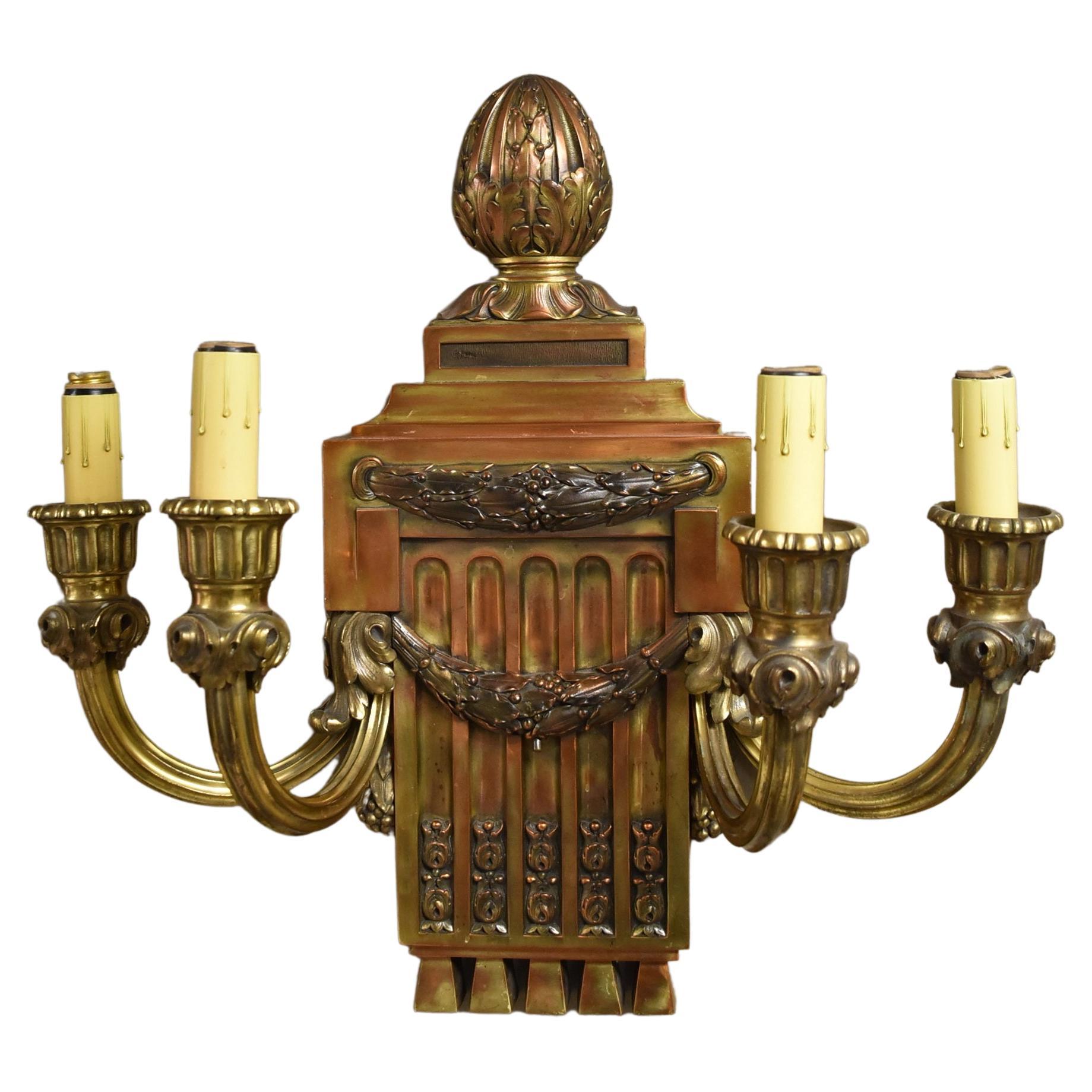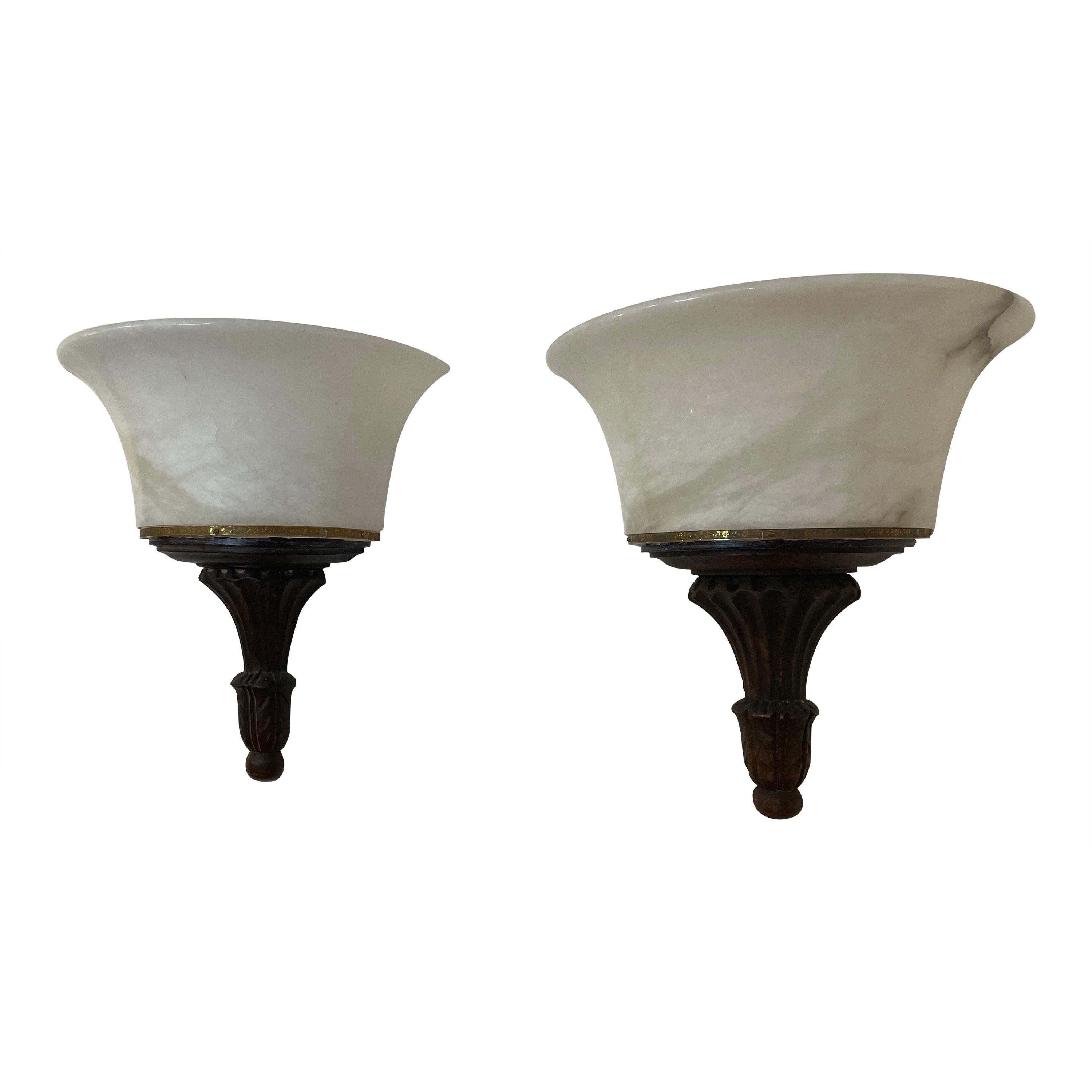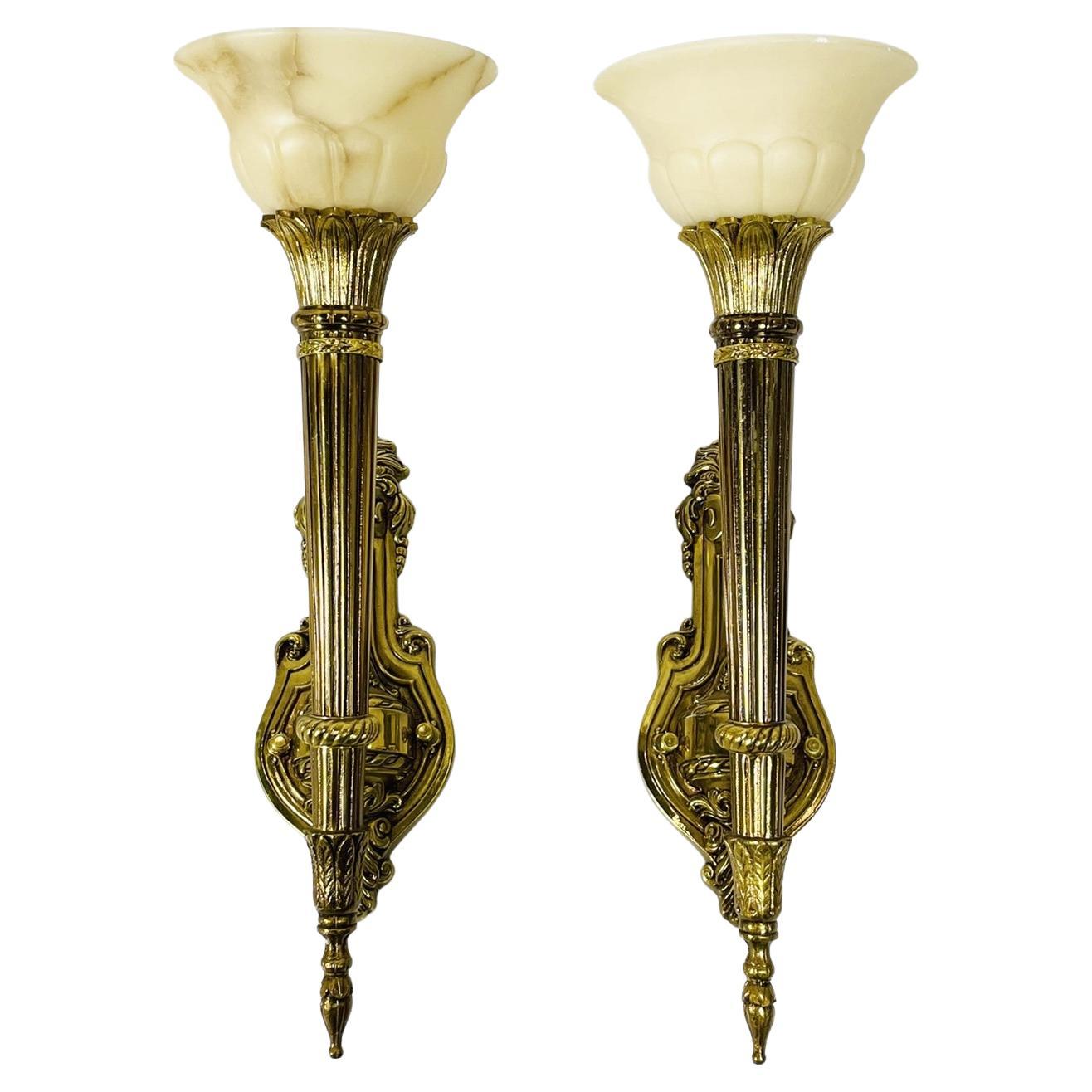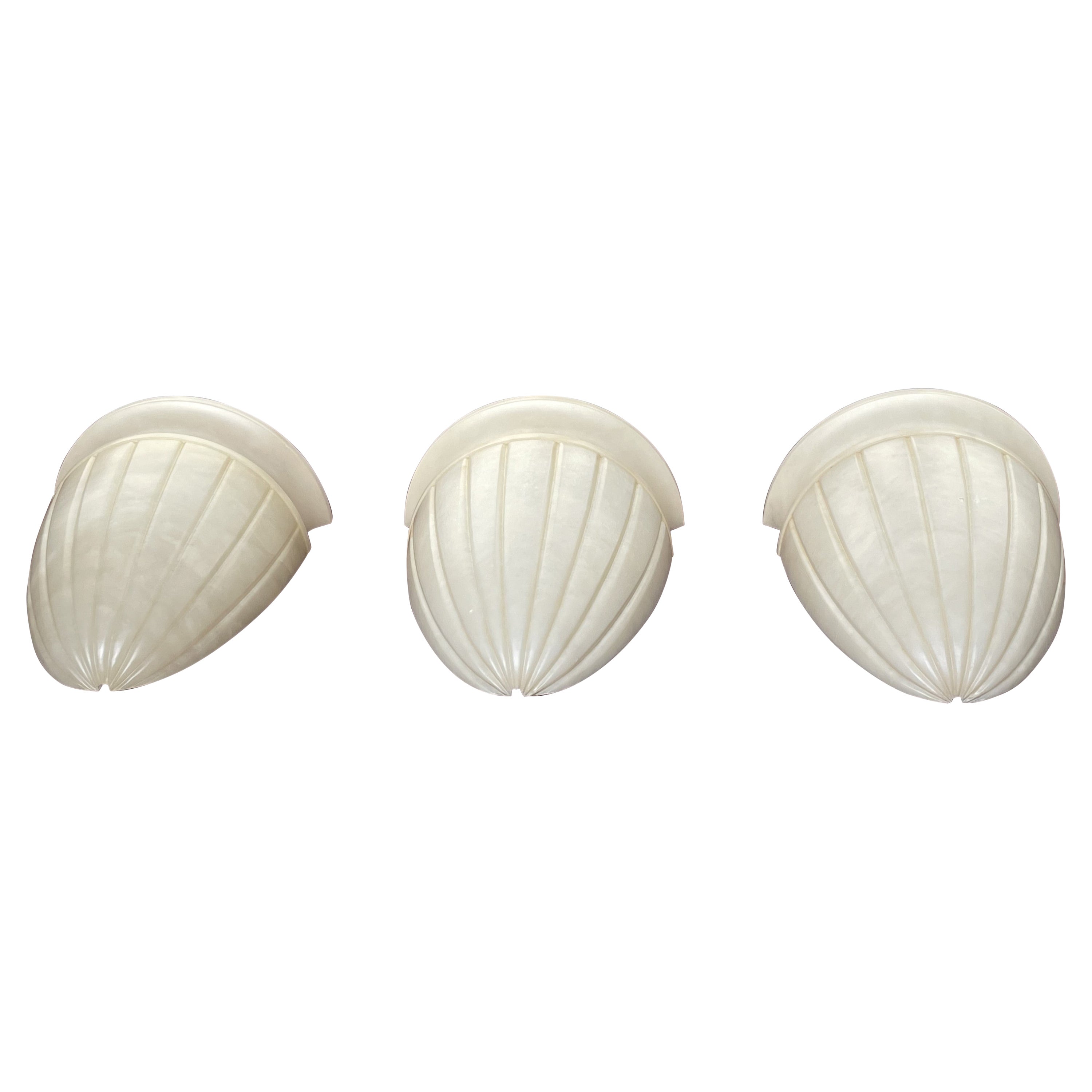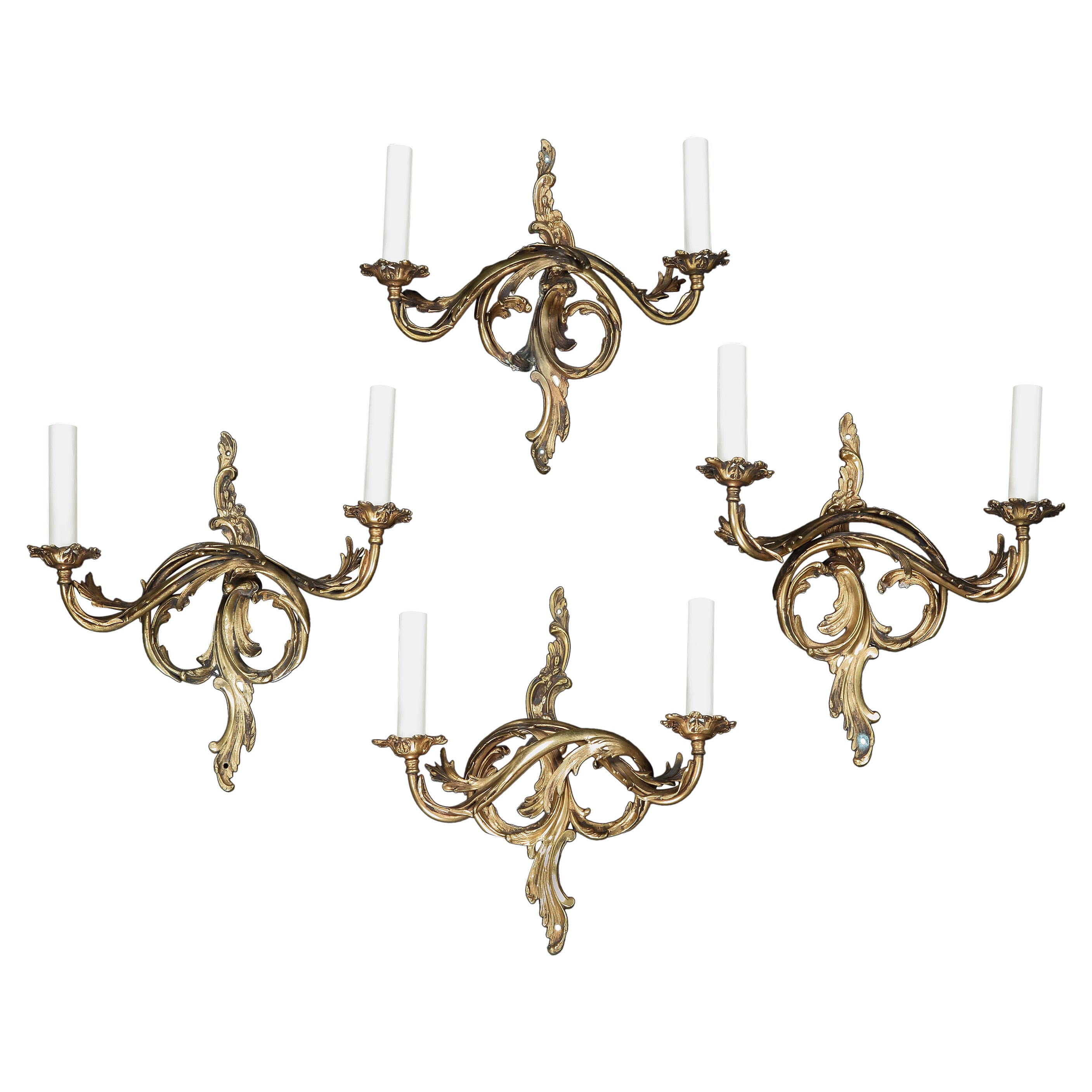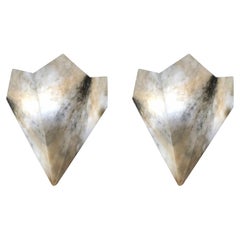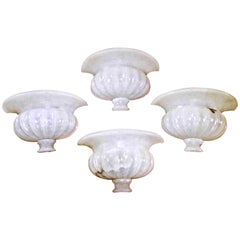
Set of Four Large Neoclassic Urn Form Alabaster Wall Sconces
View Similar Items
1 of 10
Set of Four Large Neoclassic Urn Form Alabaster Wall Sconces
About the Item
- Dimensions:Height: 12 in (30.48 cm)Width: 19.75 in (50.17 cm)Depth: 10 in (25.4 cm)
- Sold As:Set of 2
- Style:Neoclassical (In the Style Of)
- Materials and Techniques:
- Place of Origin:
- Period:
- Date of Manufacture:20th Century
- Condition:Wear consistent with age and use. Polished and lacquered. New old stock. A few marks here and there.
- Seller Location:Dallas, TX
- Reference Number:Seller: P13841stDibs: LU93814844473
You May Also Like
- Large Wood with Gold Gilt Four Light Urn Form Wall SconceLocated in Lambertville, NJLarge wood with gold gilt four light urn form wall sconce. Marked Made In Spain on back. It has wires running to the cups but no sockets. Remnant's of wax...Category
Mid-20th Century Spanish Wall Lights and Sconces
MaterialsGold Leaf
- Pair of Large, Custom, Italian Modern Neoclassical Alabaster Wall SconcesBy Armand Albert RateauLocated in New York, NYElegant pair of large Italian Modern Neoclassical style alabaster wall lights / sconces with white / grey and yellow veining. The pieces are delicately angled reflecting French Art D...Category
21st Century and Contemporary Italian Mid-Century Modern Wall Lights and...
MaterialsAlabaster
- Pair of Neoclassical French Alabaster & Bronze Wall Mounted SconcesLocated in West Palm Beach, FLPair of French neoclassical Alabaster and bronze wall mounted lights. These Parisian sconces will look great in so many settings. They are demilune sha...Category
20th Century French Neoclassical Wall Lights and Sconces
MaterialsAlabaster, Bronze
- Antique Large Bronze Neoclassical Caldwell Wall Sconce Four ArmsBy Edward F. Caldwell & Co.Located in Toledo, OHBronze Neo Classical Caldwell heavy cast ornate wall sconce. Adorned with fruit and a fluted body. Stamped on back. Four arms, electric. Dimensions...Category
Early 20th Century North American Neoclassical Wall Lights and Sconces
MaterialsBronze
- Neoclassical Alabaster Torch SconcesLocated in New York, NYThese pure white sconces sit upon torch like bases, illuminating the room in the fusion of classical and romantic forms, typical of the neoclassical period. Alabaster lighting was the first used electrical lighting in Europe, prized for its ability to softly diffuse light. As mentioned above, the Neo-Renaissance style was in reality an eclectic blending of past styles, which the architect selected on the whims of his patrons. In the true Renaissance era there was a division of labour between the architect, who designed the exterior highly visible shell, and others—the artisans—who decorated and arranged the interior. The original Italian mannerist house was a place for relaxation and entertaining, convenience and comfort of the interior being a priority; in the later Baroque designs, comfort and interior design were secondary to outward appearance. This was followed by the Neoclassical period, which gave importance to the proportions and dignity of interiors, but still lost the comfort and internal convenience of the mannerist period. It was during the Neo-Renaissance period of the 19th century that the mannerist comforts were re-discovered and taken a step further. Not only did the improved building techniques of the 1850s allow the glazing of formerly open loggias and arches with the newly invented sheets of plate glass, providing the first "picture windows", but also the blending of architectural styles allowed interiors and exteriors to be treated differently. It was at this time that the concept of "furnishing styles" manifested itself, allowing distinctions to be made between interior rooms...Category
Antique Mid-19th Century Swedish Neoclassical Wall Lights and Sconces
MaterialsAlabaster
$4,500 / set - Pair of Neoclassical Alabaster Torch SconcesLocated in New York, NYNeoclassical bronze armature support stylized flame shells, each holding one 40-60 watt bulb.Category
Antique 1820s Swedish Neoclassical Wall Lights and Sconces
MaterialsAlabaster, Bronze
$7,000 / set
Recently Viewed
View AllMore Ways To Browse
20th Century Sconces Sets Of 4
Large Hand Carved Alabaster
Alabaster Sconces Pair
Pair Wall Sconces Alabaster
Set Of Four 4 Sconces
Alabaster Pair Of Sconces
Set Of 4 Urns
Carved Alabaster Urns
Pair Alabaster Urns
Pair Of Alabaster Urns
Alabaster Sconces 4
Large Neoclassical Alabaster
Large Alabaster Sconces
Alabaster Urn Lights
Vintage Brass Candle Sconce
Brass Wall Sconce Cone
White And Clear Glass Murano Sconce
Wall Paper Shade



